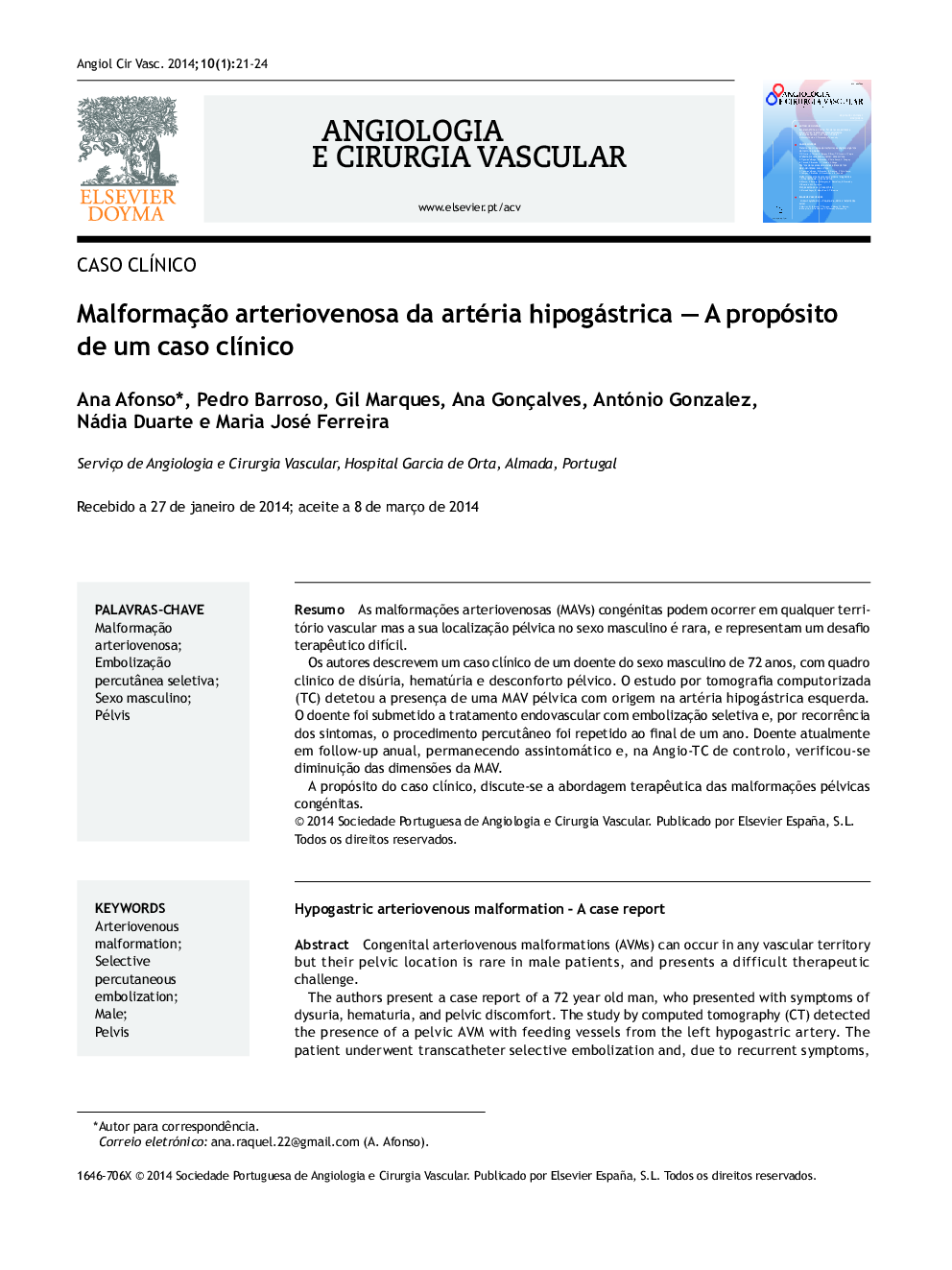| Article ID | Journal | Published Year | Pages | File Type |
|---|---|---|---|---|
| 2868400 | Angiologia e Cirurgia Vascular | 2014 | 4 Pages |
ResumoAs malformações arteriovenosas (MAVs) congénitas podem ocorrer em qualquer território vascular mas a sua localização pélvica no sexo masculino é rara, e representam um desafio terapêutico difícil.Os autores descrevem um caso clínico de um doente do sexo masculino de 72 anos, com quadro clinico de disúria, hematúria e desconforto pélvico. O estudo por tomografia computorizada (TC) detetou a presença de uma MAV pélvica com origem na artéria hipogástrica esquerda. O doente foi submetido a tratamento endovascular com embolização seletiva e, por recorrência dos sintomas, o procedimento percutâneo foi repetido ao final de um ano. Doente atualmente em follow-up anual, permanecendo assintomático e, na Angio-TC de controlo, verificou-se diminuição das dimensões da MAV.A propósito do caso clínico, discute-se a abordagem terapêutica das malformações pélvicas congénitas.
Congenital arteriovenous malformations (AVMs) can occur in any vascular territory but their pelvic location is rare in male patients, and presents a difficult therapeutic challenge.The authors present a case report of a 72 year old man, who presented with symptoms of dysuria, hematuria, and pelvic discomfort. The study by computed tomography (CT) detected the presence of a pelvic AVM with feeding vessels from the left hypogastric artery. The patient underwent transcatheter selective embolization and, due to recurrent symptoms, percutaneous procedure was repeated one year after. Patient has been followed anually and remains asymptomatic and the CT demonstrated reduction in AVM size.In this report, we will discuss the therapeutic approach to congenital pelvic malformations.
